One of the great things expeditioners get to do is come up with some sort of project they would like to do while in Kenya. While most of us chose to teach in the schools as part of that, we also chose other projects that would benefit the villagers in some way. Tara and I pooled our money with that of Tingey’s and Workman’s to make science kits for the schools. While some of the supplies were purchased at home and taken over, most of what we got was purchased in nearby Mombasa.
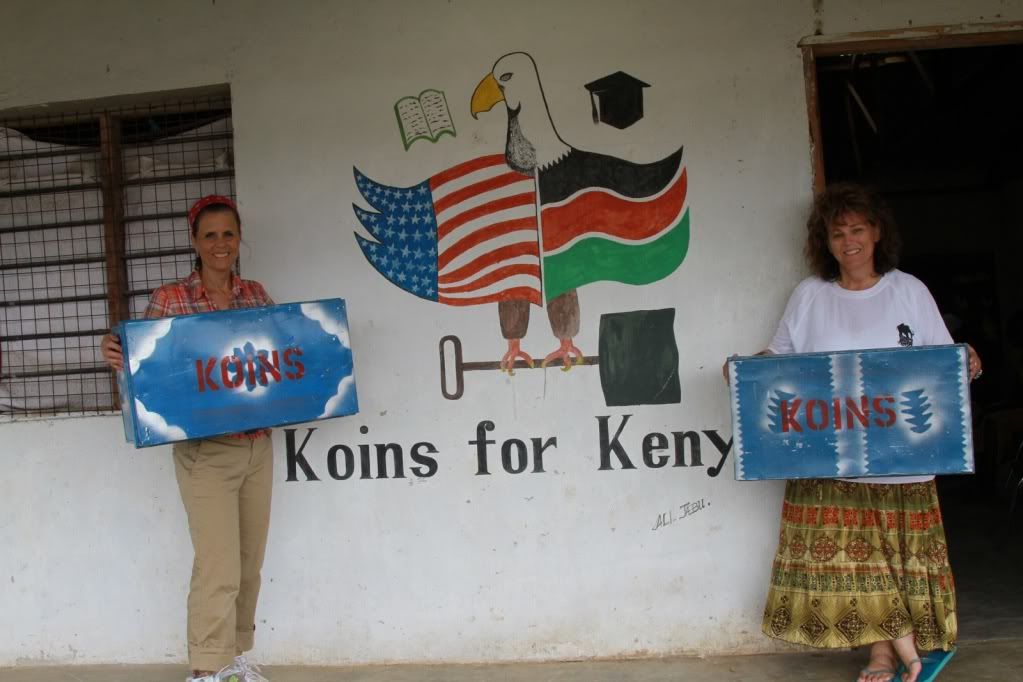 |
| Karen and Sue with boxes ready to fill |
It took a little doing to get everything we needed but finally it arrived and the task of assembling began. The boxes themselves were bright blue trunks roughly 2 x 4 feet in size. In each one we were able to put a microscope, litmus paper, beakers, test tubes, magnets, charts, batteries, and other sciency stuff. We had just spread it all out on our dinner tables when Buffalo came in and stopped short. Buffalo is a man, probably in his 50’s, who serves on the Koins board and has been a lifelong teacher there in the village. He is a bright, pleasant man and a great advocate of the students there. I was so humbled as he approached the boxes laid out on the tables. He had heard we were going to provide science boxes to each of the schools but he hadn’t thought about what that meant. As he peered into the first box he literally caught his breath. “Microscopes?” he asked. “You are going to give every school their own microscope?” When we nodded our heads, his eyes filled with tears and he spoke almost reverently. “Not even the secondary schools can have a microscope.” He picked up each item we had placed in the box and marveled that we could think of such a fine gift to give the 10 nearby schools, including his. (Cindy gets full credit for thinking of this. She really has a grasp on their needs.) He just kept shaking his head in amazement and grinned from ear to ear as we finished filling the trunks.
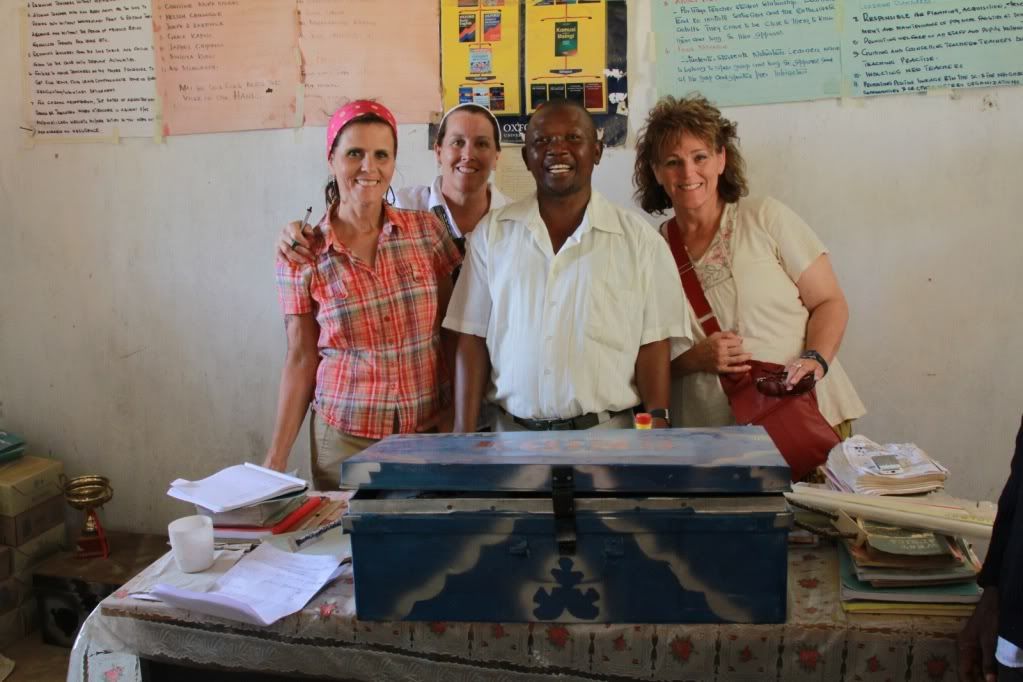 |
| The headmaster of the Bofu school receives a science box |
Again, I was reminded that because we have so much, we sometimes lose our “awe.” As we delivered these boxes to the schools you could see Buffalo’s reaction repeated by each new headmaster or teacher who opened it up. At one school, Cindy took it into an 8th grade class to open in front of the kids. As the lid was lifted and they could see the picture of the microscope on its’ box, they erupted into cheers and clapping while the teacher just jumped up and down! I wish you could have seen the joy you brought to these students. They will now be able to learn in a whole new way and the possibilities of where it will take them are limitless.
 |
| Buffalo explains the science box contents |
To understand how valuable a microscope is you need to imagine the frustration of the people in the villages who get so little help from outside. While the Kenyan government has medication that can cure malaria, patients can’t receive the medication until they have a confirmed diagnosis of the disease. Never mind that they drink from the same watering hole that cows, goats and sometimes elephants do ( and they don’t just drink there, mind you…) or that they have all the symptoms of malaria. If they have not had a blood test confirm malaria, they get no treatment. Being painfully aware of this after 8 trips to Africa, Cindy spent last school year helping her students raise money – about $1,500.00 – to buy a microscope for the dispensary in Mnyenzeni. The first week it was in operation, 8 patients were tested for malaria. Six of them had confirmed cases and were able to get medication to cure it, literally saving their lives. While the microscopes you and I provided were not strong enough to detect malaria, these students will learn how to use one and hopefully spur some of them on to a course of study that will improve the quality of their lives by providing more competent health care.
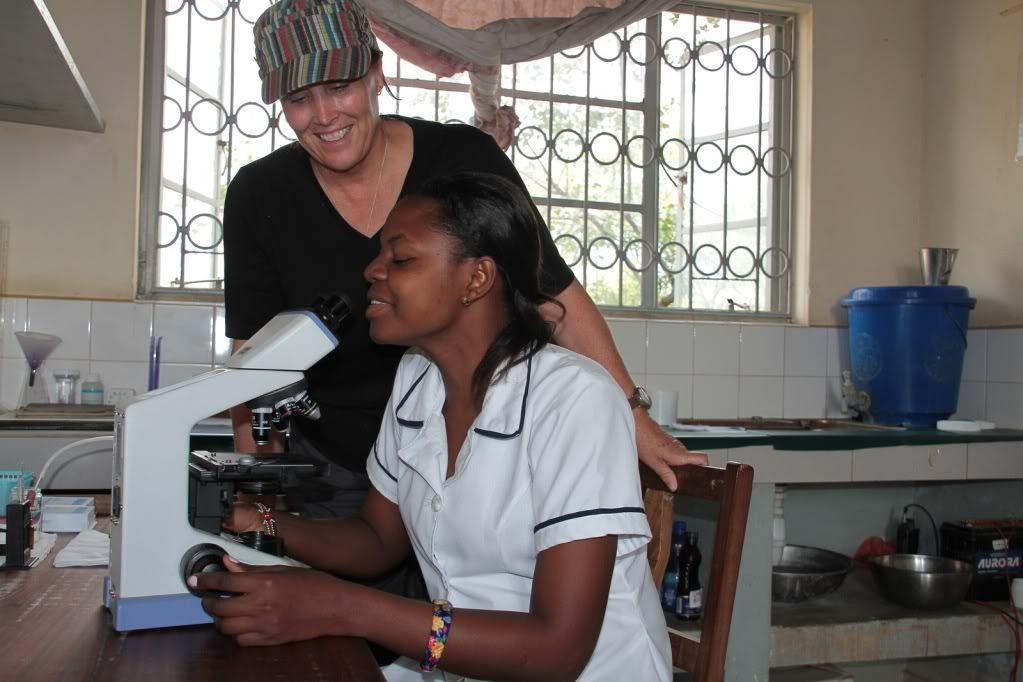 |
| Cindy observes the microscope in action |
When my uncle, Bill Seliger, heard of the need for microscopes, he changed his mind about selling his on ebay and instead, let us take it to the village and place it in the dispensary. I should say he let Tara take it. He had carefully packed it in a small case, providing photographic documentation and explicit description so that we didn’t keep getting held up in airport security. It was a 23-pound treasure and Tara hand carried it through 5 airports along with her own 50 lb. bag making sure that it didn’t get bumped or disturbed. We were all glad when it found its new home in the dispensary. While they did have the microscope from Windridge, it is electric and that can be a problem. For some reason that we never came to understand, the government randomly cuts off the power and they can go from hours to days without it. While most villagers would never know it happened because they don’t have electricity in their homes, we experienced it for a little over a day and found it to be really irritating. While it doesn’t affect the air conditioners – because they don’t have any - it does wreak havoc with the refrigerators, power tools, sewing machines, and the one microscope Koins has placed in the village. With this additional one, the power outages will no longer have such an impact on the sick.
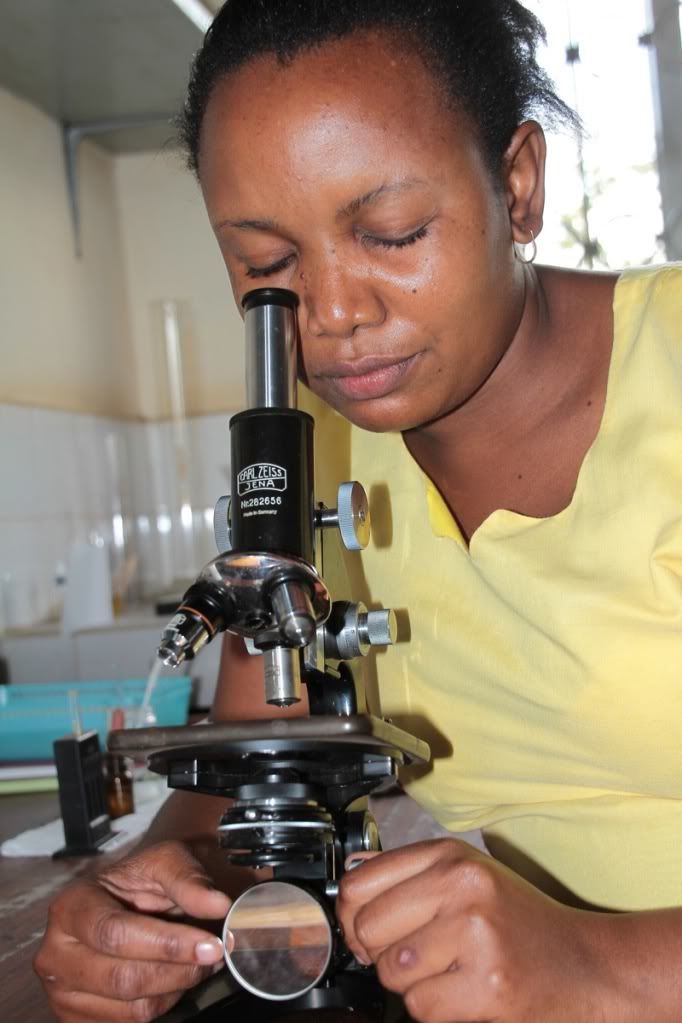 |
| A microscope for the clinic that doesn't need power |
Thanks to all of you for helping provide science boxes for these 10 schools. It really was Christmas in July.
Karen Timothy
__________________________________________
During our July trip to Kenya, I spent a morning in the dispensary, working with the lab techs who use the microscope. I had a chance to talk to them about the importance of the microscope, how it is used to detect a variety of diseases, and more importantly, gives them the ability to accurately treat patients who arrive sick at the dispensary.
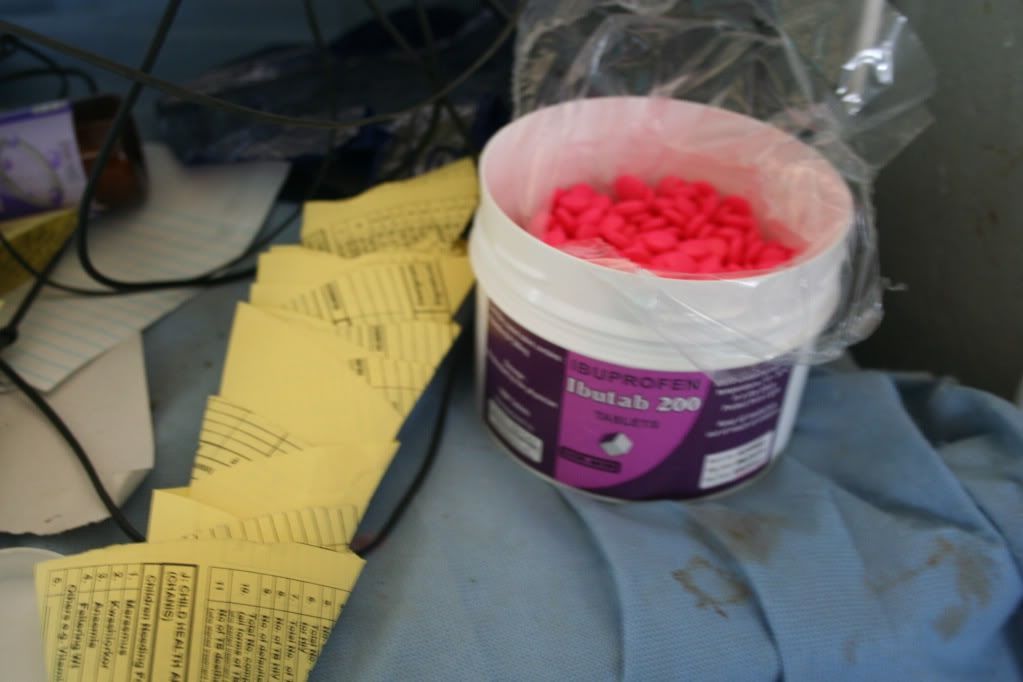 |
| Medicine at the dispensary |
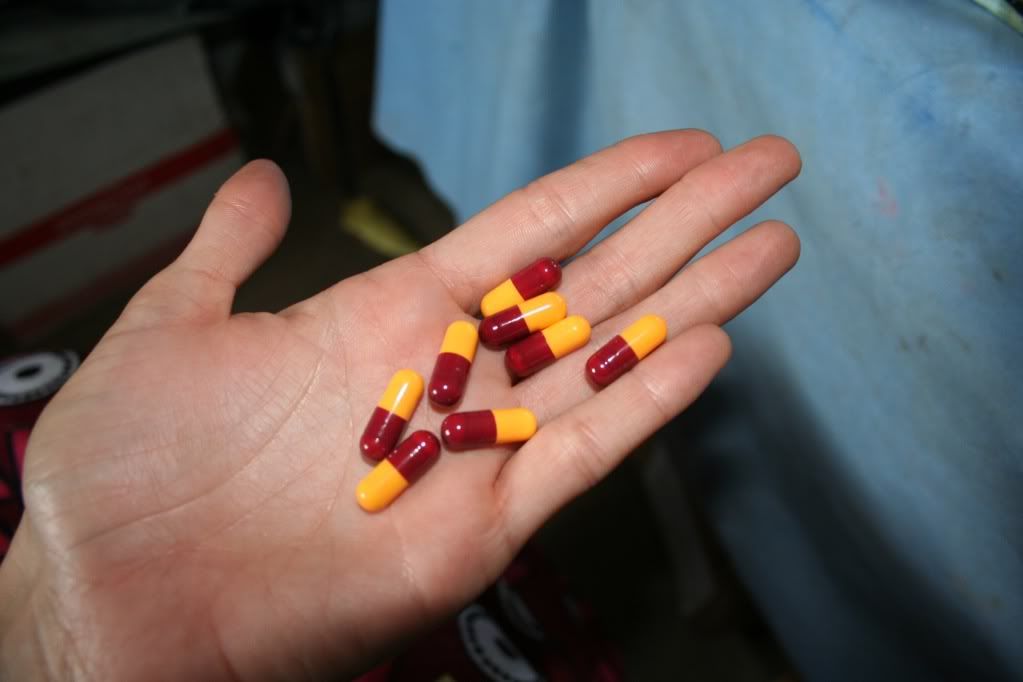 |
| Antibiotics to treat malaria |
I watched with great interest as the lab techs washed and disinfected slides to reuse, and talked to me of their training and work history. They showed me in the microscope how to detect malaria in the blood. It was fascinating to see order and procedure take place in an area of the world where so much is chaotic and rudimentary.
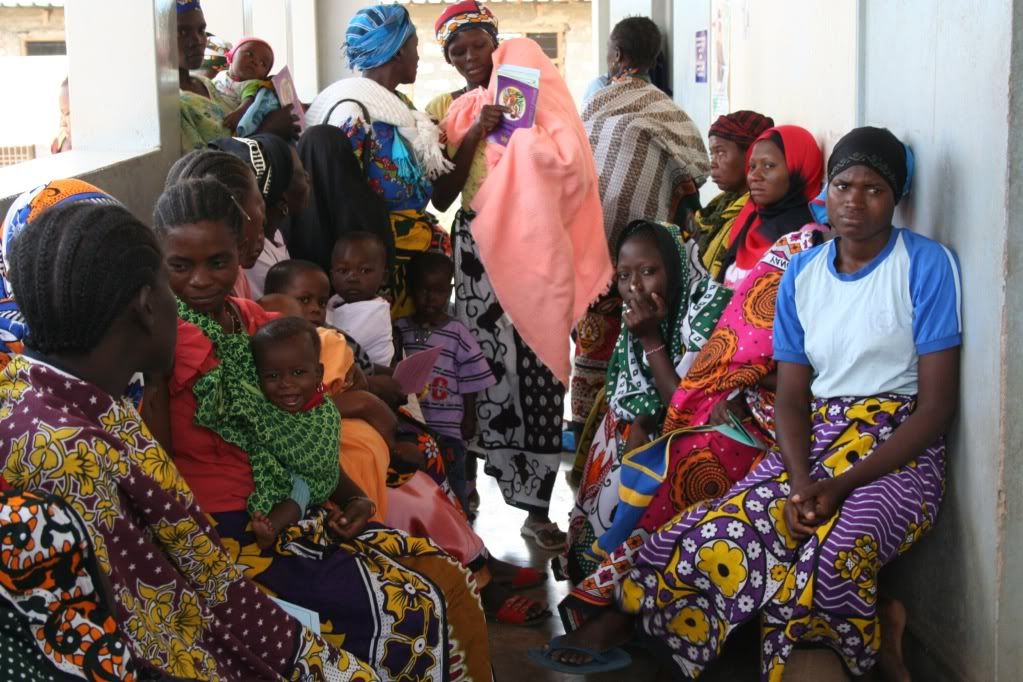 |
| Villagers waiting to be seen at the dispensary |
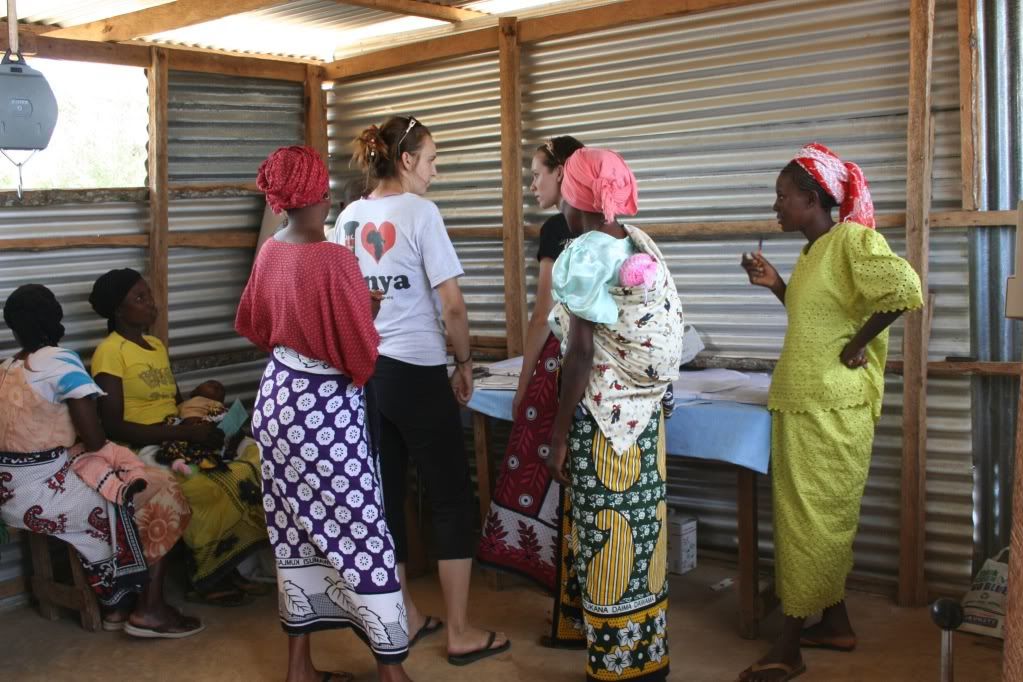 |
| The well baby area of the dispensary |
Mnyenzeni is the only dispensary in the rural southeast coastal area of Kenya that has a microscope. It has greatly increased the traffic that flows through the dispensary. At any time on any given day, there will be 25-50 people outside the small building, patiently waiting their turn to be seen by the nurse. The dispensary has the ability to take blood and urine samples, test for diseases, do prenatal and postpartum checks and well baby checks, and prescribe drugs. There is a large clinic adjacent to the dispensary being built by the Kenyan government. We are hopeful that upon its completion, health care in the Koins service area of Kenya will rise a notch.
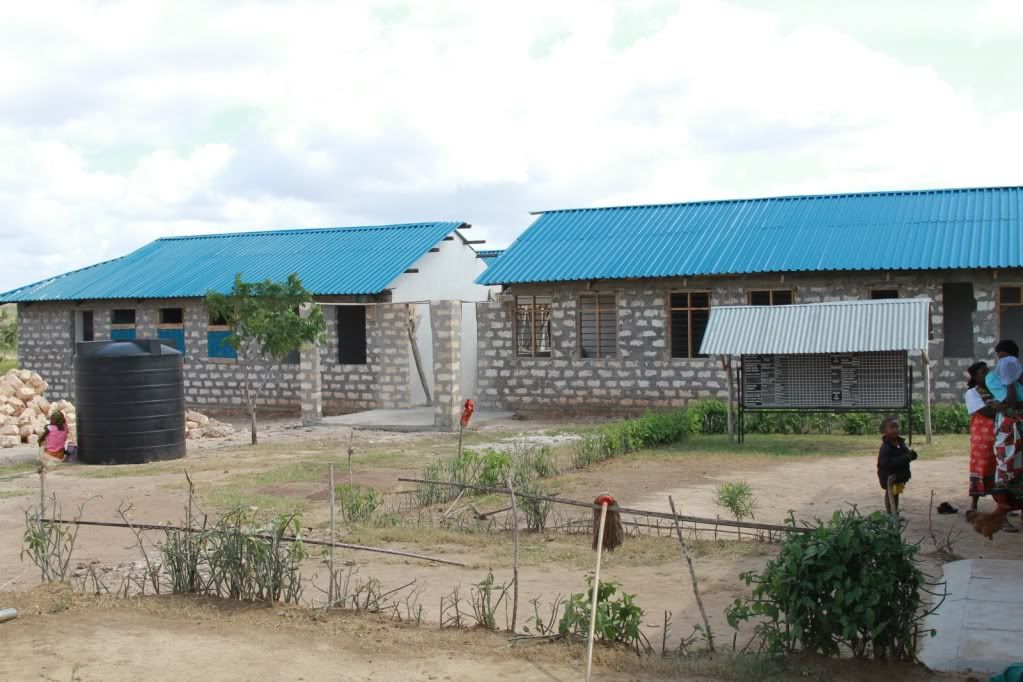 |
| Clinic under construction in Mnyenzeni |
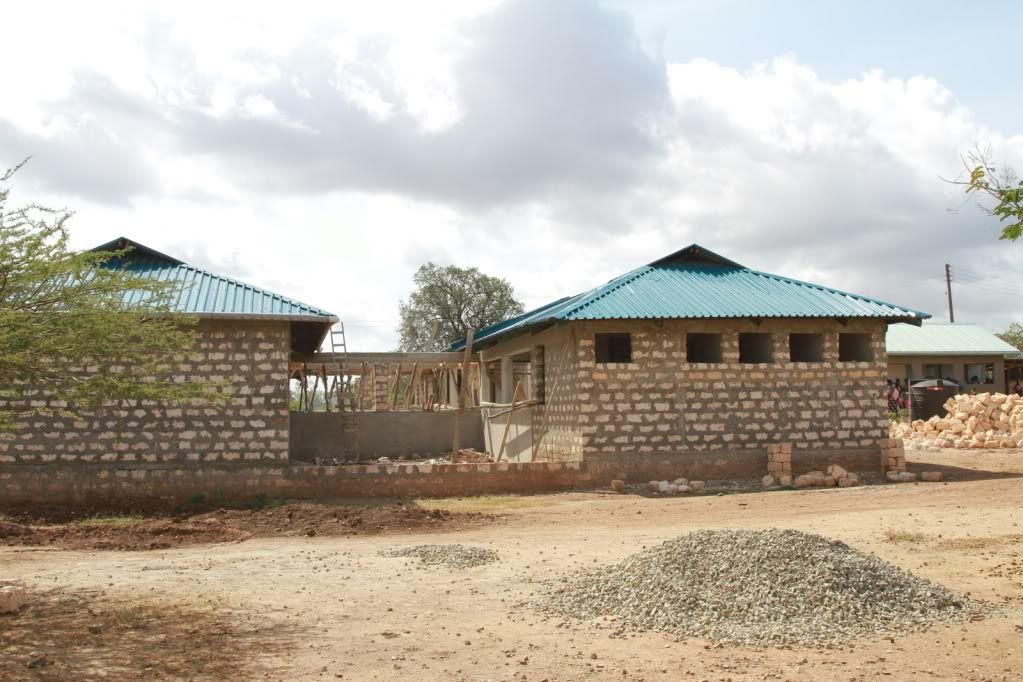 |
| Clinic being built right by the dispensary in Mnyenzeni |
With the addition of the microscope at the dispensary, Koins has helped save lives. In less than 6 months, there have been many lives saved by the detection of malaria, tuberculosis, bilharzia, cholera, and other diseases that can be found in the blood or urine.
We are hopeful that upon completion, the clinic will provide an opportunity for Koins to bring in medical doctors that can treat more complex issues.
Asante,
IVL

No comments:
Post a Comment